Now we will simulate ternary full adder:
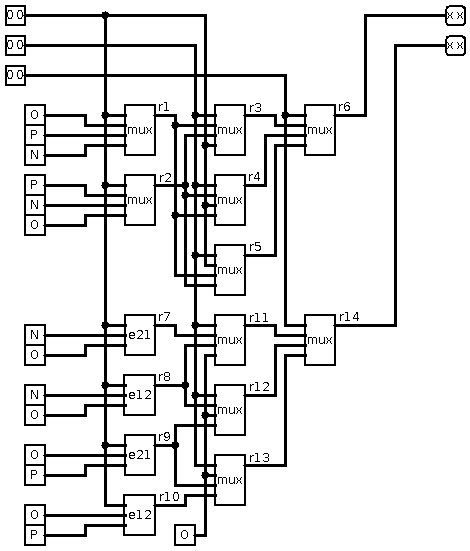
Using ternary.vhd described in previous log, we can do this architecture in VHDL:
use ternary.all;
entity main is
Port ( a : in FakeTrit;
b : in FakeTrit;
c : in FakeTrit;
s : out FakeTrit;
c2 : out FakeTrit
);
end main;
architecture Behavioral of main is
signal r1,r2,r3,r4,r5,r6,r7,r8,r9,r10,r11,r12,r13,r14 : FakeTrit;
signal a1,b1,c1,s1,cc1 : FakeTrit;
begin
process (a,b,c)
FUNCTION io_invert(T: FakeTrit) RETURN FakeTrit IS
begin
case T is
when N =>
return P;
when O =>
return X;
when P =>
return N;
when others =>
return O;
end case;
end;
begin
a1 <= io_invert(a);
b1 <= io_invert(b);
c1 <= io_invert(c);
r1 <= mux(a1,O,P,N);
r2 <= mux(a1,P,N,O);
r3 <= mux(b1,r1,r2,a1);
r4 <= mux(b1,r2,a1,r1);
r5 <= mux(b1,a1,r1,r2);
r6 <= mux(c1,r3,r4,r5);
r7 <= e21(a1,N,O);
r8 <= e12(a1,N,O);
r9 <= e21(a1,O,P);
r10 <= e12(a1,O,P);
r11 <= mux(b1,r7,r8,O);
r12 <= mux(b1,r8,O,r9);
r13 <= mux(b1,O,r9,r10);
r14 <= mux(c1,r11,r12,r13);
s1 <= r6;
cc1 <= r14;
s <= io_invert(s1);
c2 <= io_invert(cc1);
end process;
end Behavioral;
io_invert is function to do bitwise inversion for inputs and outputs, because we are using 3-state switches (0 is active state) and 3-wire Red-Green LEDs (0 is active state) - schematics below repeated 3 time on the board with CoolRunner-II:
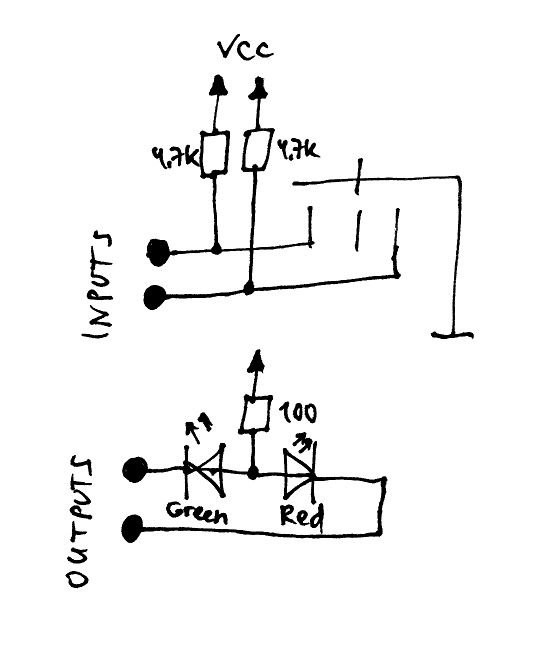
This is 1+1+1 = 3
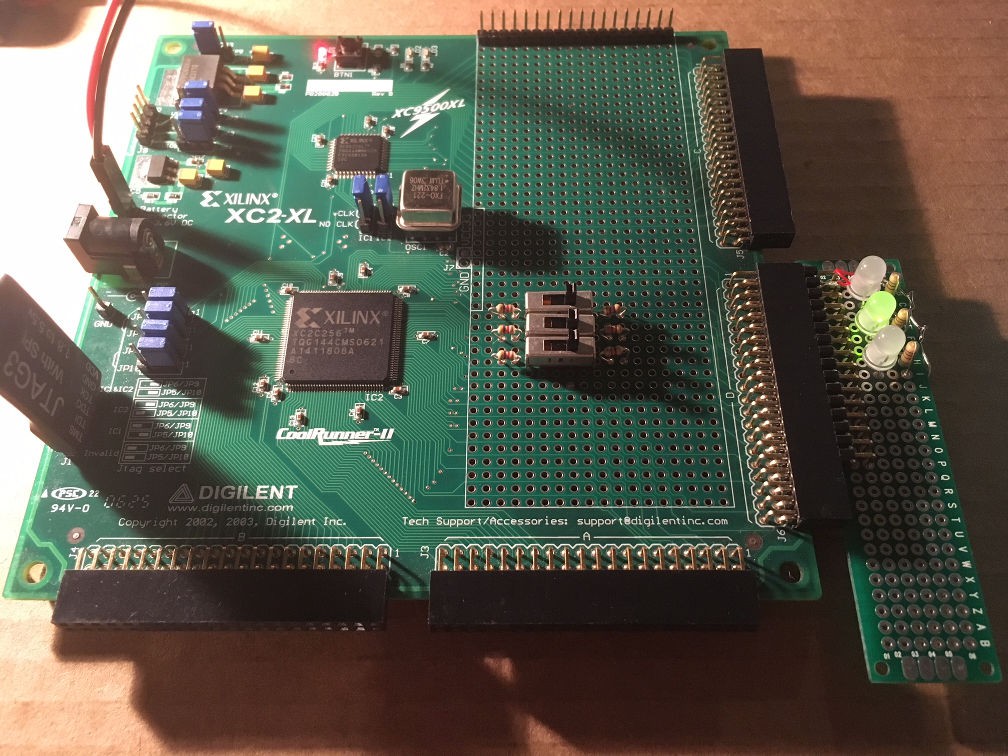
This is (-1)+(-1)+(-1) = -3
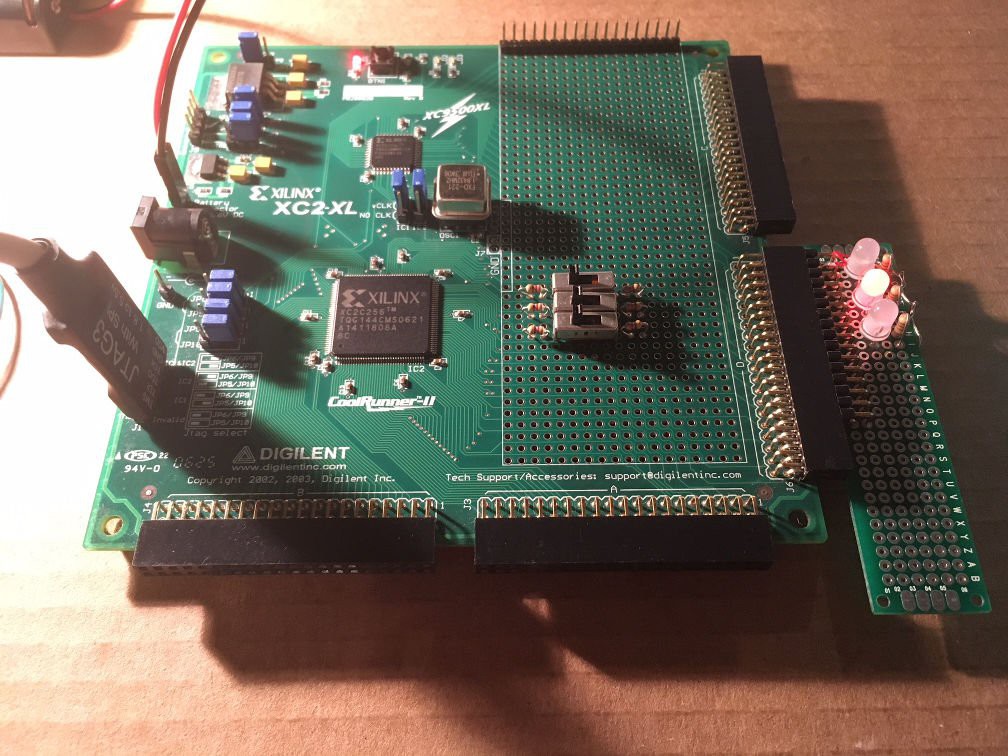
Pin assignments:
NET "a<0>" LOC = "P140" | IOSTANDARD = LVTTL ; NET "a<1>" LOC = "P142" | IOSTANDARD = LVTTL ; NET "b<0>" LOC = "P138" | IOSTANDARD = LVTTL ; NET "b<1>" LOC = "P139" | IOSTANDARD = LVTTL ; NET "c<0>" LOC = "P136" | IOSTANDARD = LVTTL ; NET "c<1>" LOC = "P137" | IOSTANDARD = LVTTL ; NET "s<0>" LOC = "P87" | IOSTANDARD = LVTTL ; NET "s<1>" LOC = "P88" | IOSTANDARD = LVTTL ; NET "c2<0>" LOC = "P85" | IOSTANDARD = LVTTL ; NET "c2<1>" LOC = "P86" | IOSTANDARD = LVTTL ;
This ternary full adder ate 8 macrocells (4% of XC2C256):
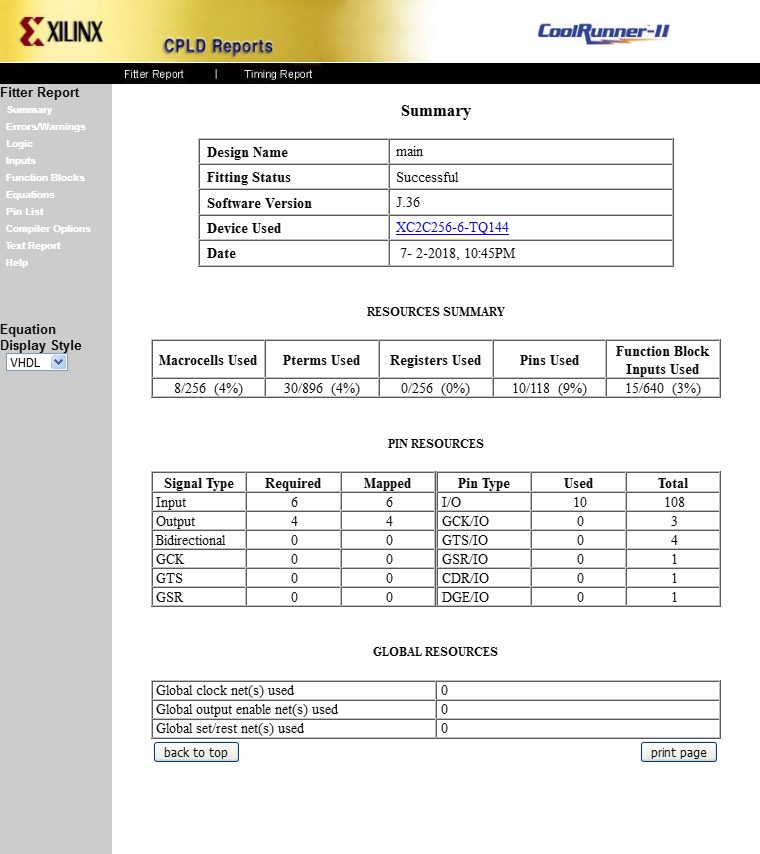
And this is logic equations generated by Xilinx ISE software:

Next step - MEM...
 SHAOS
SHAOS
Discussions
Become a Hackaday.io Member
Create an account to leave a comment. Already have an account? Log In.